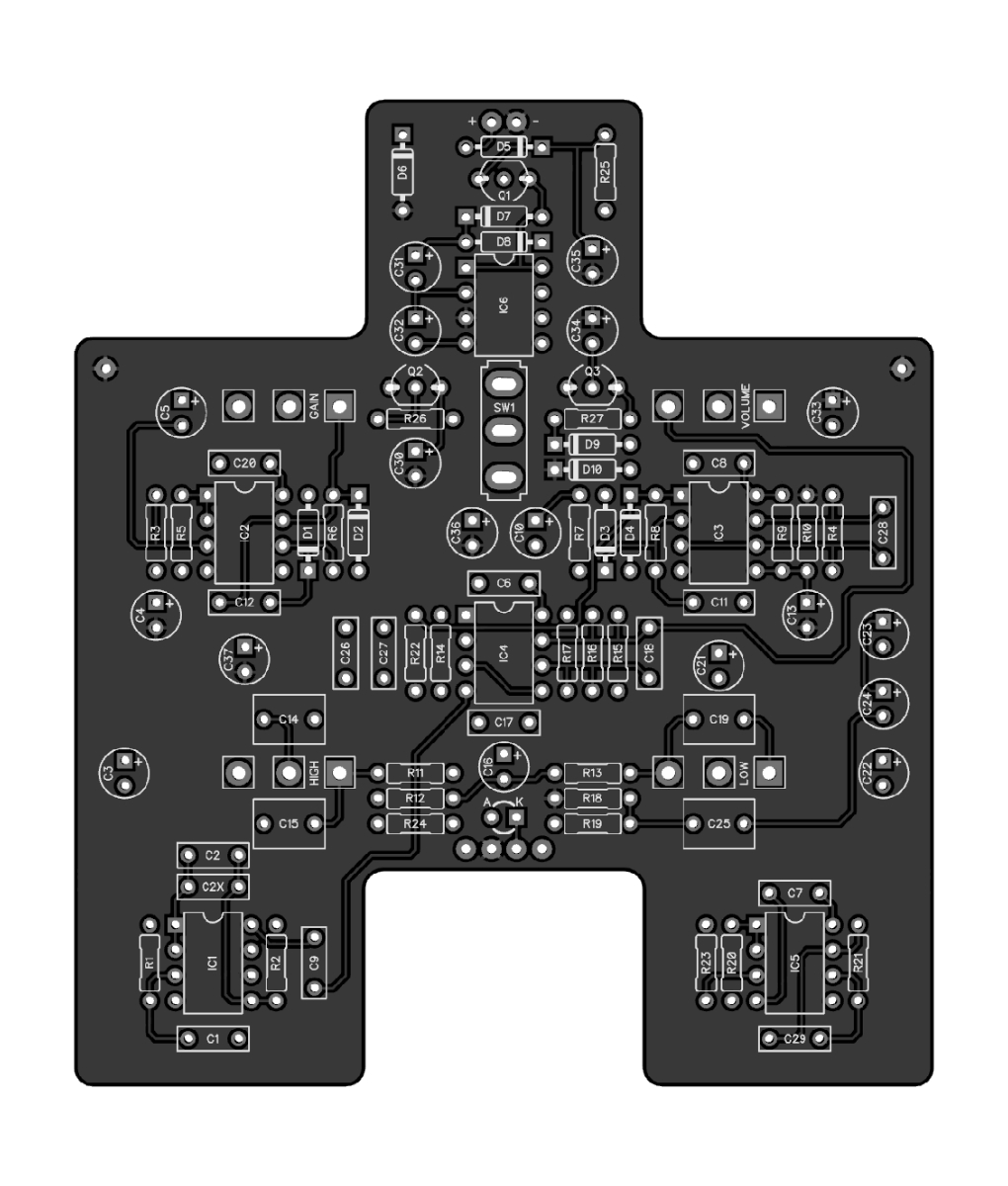Hi All
I've been working on the Chauffeur Overdrive as my first pedal build.

First of all, the inspection of all the parts and the PCB.
Fortunately, I found that one of the PCB patterns is disconnected in the middle of the line between R13 - IC4 6pin (faulty PCB). Anyway, so I patched it up with a wire.
When I turn the pedal off (LED off), I can get sound through the amp (bypass mode).
However, when I turn the pedal ON (LED is ON), I do not get any sound through the amp. Just quiet (no hum) Even if controlled the 4 knobs, nothing changes.
Does anyone have experience with this kind of problem? Or know how to fix it?
Before I give up, I just want to hear someone's technical opinion.
I will be grateful for any help you can provide.
Cheers. Marcus.


I've been working on the Chauffeur Overdrive as my first pedal build.

First of all, the inspection of all the parts and the PCB.
Fortunately, I found that one of the PCB patterns is disconnected in the middle of the line between R13 - IC4 6pin (faulty PCB). Anyway, so I patched it up with a wire.
When I turn the pedal off (LED off), I can get sound through the amp (bypass mode).
However, when I turn the pedal ON (LED is ON), I do not get any sound through the amp. Just quiet (no hum) Even if controlled the 4 knobs, nothing changes.
Does anyone have experience with this kind of problem? Or know how to fix it?
Before I give up, I just want to hear someone's technical opinion.
I will be grateful for any help you can provide.
Cheers. Marcus.









